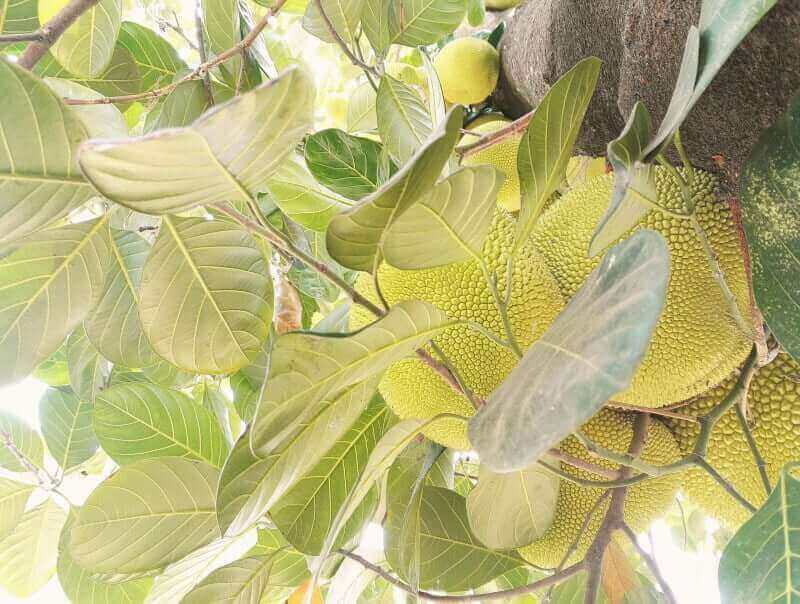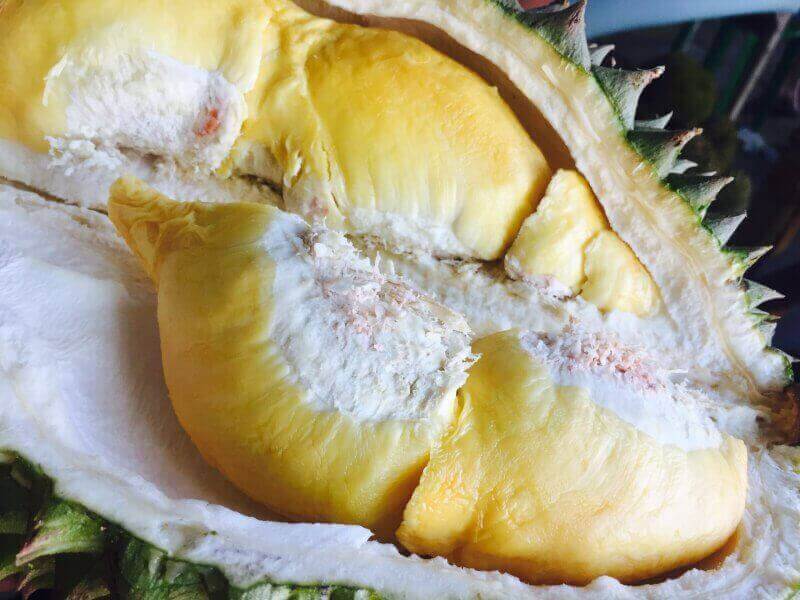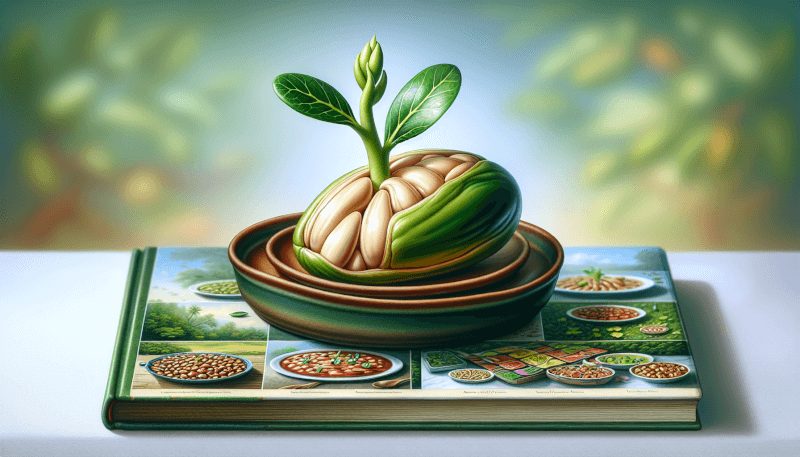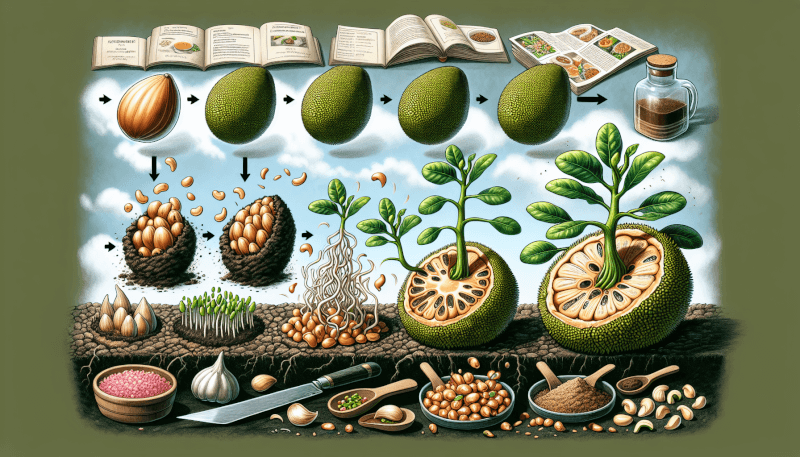👋 Click the mic button to talk to Alfred, the Todd's Seeds Gardening/Sprouting Expert – Feel free to ask him anything!
Ask Virtual Todd Anything - Click the Mic
Have you ever wondered how to sprout jackfruit seeds? In this article, you will learn a simple and effective method to start growing your own jackfruit trees from seeds. Sprouting jackfruit seeds is not only a fun and rewarding process, but it also allows you to enjoy the delicious fruit and contribute to sustainability by growing your own food. With just a few steps and a little patience, you can witness the magic of sprouting jackfruit seeds and embark on a journey of homegrown goodness. So, let’s get started and discover the joy of growing your own jackfruit trees!
Preparing the Jackfruit Seeds
Collecting jackfruit seeds
To begin the process of sprouting jackfruit seeds, you first need to collect mature seeds from a ripe jackfruit. When selecting a jackfruit for seed collection, make sure it is fully ripened and has a sweet aroma. This indicates that the seeds inside are mature and ready for planting. Carefully remove the seeds from the fruit by cutting it open, and collect them in a bowl or container. It is important to handle the seeds gently to avoid damaging them.
Cleaning the seeds
After collecting the jackfruit seeds, it is necessary to clean them thoroughly to remove any residue or debris. Rinse the seeds under cool running water and gently rub them between your fingers to remove any dirt or pulp. If there are any stubborn bits of pulp stuck to the seeds, you can use a soft brush or toothbrush to gently scrub them away. Ensure that all the seeds are clean before moving on to the next step.
Removing the inner covering
Next, you need to remove the thin, papery covering that surrounds the jackfruit seeds. This inner covering can inhibit the germination process if left intact. To remove it, soak the cleaned jackfruit seeds in water for about 24 hours. After soaking, take each seed and carefully peel off the inner covering, revealing the creamy white seed inside. Be patient and gentle while peeling to avoid damaging the seed. Once all the seeds are peeled, they are ready for the soaking process.
Soaking the Jackfruit Seeds
Soaking in water
One way to prepare jackfruit seeds for germination is by soaking them in water. Fill a clean bowl with water and place the peeled seeds in it. Allow the seeds to soak for 24 to 48 hours, changing the water every 12 hours. Soaking the seeds in water helps to soften the seed coat, promoting germination.
Soaking in saltwater
Alternatively, you can choose to soak the jackfruit seeds in saltwater. For this method, add a teaspoon of salt to a bowl of water and stir until dissolved. Place the peeled seeds in the saltwater solution and let them soak for 24 hours. Soaking the seeds in saltwater helps to remove any potential pathogens and provides a favorable environment for sprouting.

Germination Process
Drying the soaked seeds
After the soaking period, it is essential to dry the soaked jackfruit seeds before proceeding with the germination process. Spread out the seeds on a clean towel or paper towel and allow them to air dry for a few hours. Make sure they are completely dry before transferring them to the germination environment.
Creating a germination environment
To successfully germinate jackfruit seeds, you need to create a suitable environment that provides the right conditions for sprouting. You can use various methods to achieve this, such as germination trays, seedling pots, or even homemade containers made from recycled materials. Fill the chosen container with a well-draining potting mix or a mixture of soil and compost.
Planting the seeds
Carefully plant the dried jackfruit seeds in the prepared containers, ensuring they are not buried too deeply. Plant them at a depth of about 1 to 2 inches, with the pointed end facing downwards. Gently cover the seeds with soil, making sure they are firmly in place. Water the soil lightly to provide moisture for germination.
Providing Optimal Conditions for Sprouting
Temperature and humidity
Maintaining the right temperature and humidity levels is crucial for the successful sprouting of jackfruit seeds. Aim to keep the temperature around 75 to 85 degrees Fahrenheit (24 to 29 degrees Celsius) during the day and slightly cooler at night. Providing a humid environment can be achieved by placing a transparent plastic cover or a plastic bag over the containers to create a mini greenhouse effect.
Sunlight exposure
Jackfruit seeds require bright but indirect sunlight for successful sprouting. Place the containers in a well-lit area, but avoid direct exposure to intense sunlight, as it can be too harsh for the young seedlings. If sunlight is limited, you can supplement it with artificial grow lights to ensure proper growth.
Watering requirements
Water the sprouting jackfruit seeds regularly to keep the soil consistently moist but not waterlogged. Avoid overwatering, as it can lead to rotting and root damage. Use a gentle watering technique to prevent disturbing the newly sprouted seedlings. Monitor the moisture levels and adjust the watering frequency accordingly, keeping the soil slightly damp at all times.
Feeding the sprouting seeds
As the sprouts emerge, they will require nutrients to support their growth. Begin feeding the young jackfruit plants with a balanced liquid fertilizer diluted according to the package instructions. This will provide them with the essential nutrients they need for healthy development. Follow the recommended feeding schedule and gradually increase the strength of the fertilizer as the plants grow.

Monitoring the Sprouting Process
Checking for signs of sprouting
After planting the jackfruit seeds, it is important to monitor them closely for signs of sprouting. The germination period can vary, but typically, you can expect to see the first sprouts emerging within 1 to 2 weeks. Look for small green shoots breaking through the soil surface, indicating that the seeds have successfully germinated.
Observing growth and development
As the sprouts continue to grow, you can observe their progress by monitoring their height and the development of leaves. Healthy jackfruit plants will exhibit vigorous growth, with new leaves unfurling regularly. Take note of any abnormal growth patterns, discoloration, or signs of distress, as these may indicate underlying issues that need to be addressed.
Identifying common issues
During the sprouting process, certain issues may arise that can hinder the growth of jackfruit plants. Some common problems include damping off, which is characterized by the sudden collapse and death of seedlings due to fungal infection, as well as pests such as aphids and mealybugs. Promptly address any issues by adjusting environmental conditions, using organic pest control methods, or seeking professional guidance if necessary.
Transferring Sprouts to Pots
Choosing suitable pots
Once the jackfruit sprouts have grown to a suitable size, usually about 6 to 8 inches tall, it is time to transfer them to individual pots. Select pots that have drainage holes at the bottom to prevent waterlogging. Use pots that provide enough room for the roots to grow and allow for future growth of the plants. Ceramic or plastic pots are commonly used for this stage of growth.
Preparing potting soil
Before transplanting the sprouts, prepare a well-draining potting mix suitable for jackfruit plants. You can create your own mix by combining equal parts of high-quality potting soil, compost, and perlite or coarse sand for improved drainage. Fill the pots with the potting mix, leaving enough space at the top to accommodate the sprouts.
Transplanting the sprouts
Carefully remove the jackfruit sprouts from their original container, taking care not to damage the root system. Place each sprout in an individual pot and gently fill in the gaps with the potting mix. Ensure that the root ball is covered with soil and firmly press the soil around the base of the sprout. After transplanting, water the pots thoroughly to help the roots establish in their new environment.

Caring for Sprouted Jackfruit Plants
Watering and drainage
Proper watering and drainage are crucial factors in the care of sprouted jackfruit plants. Water the plants regularly, ensuring that the soil remains evenly moist. Avoid overwatering or allowing the pots to sit in standing water, as this can lead to root rot. Provide adequate drainage by emptying excess water from saucers or using pots with drainage holes.
Pruning and shaping
To promote a healthy and well-shaped jackfruit plant, pruning is necessary. Remove any dead or damaged branches, as well as any suckers that may grow from the base of the plant. Pruning can also help control the size and shape of the plant, ensuring it remains manageable and aesthetically pleasing.
Fertilizing the plants
To ensure the proper growth and development of jackfruit plants, regular fertilization is essential. Use a balanced slow-release fertilizer specifically formulated for fruit trees, following the instructions on the packaging. Apply the fertilizer around the base of the plant, taking care not to allow it to come into direct contact with the stem. Regularly monitor the plants for signs of nutrient deficiencies and adjust the fertilizer application accordingly.
Protecting from pests and diseases
Like any other plant, jackfruit trees can be vulnerable to various pests and diseases. Monitor the plants regularly for any signs of infestation, such as holes in leaves, sticky residue, or distorted growth. Use organic pest control methods such as neem oil or insecticidal soap to manage common pests like aphids or mealybugs. Address any signs of disease promptly by removing affected plant parts and applying appropriate treatments.
Harvesting Jackfruit
Determining ripeness
Knowing when to harvest jackfruit is important to ensure optimal flavor and texture. A ripe jackfruit will have a sweet fragrance and a slightly soft outer skin when touched. The skin color may also change from green to yellowish or light brown. Carefully observe the color, aroma, and texture to determine if the fruit is ready to be harvested.
Cutting and preparing jackfruit
To harvest a jackfruit, it is necessary to cut it from the tree using a sharp knife or pruning shears. Make a clean cut as close to the stem as possible without damaging the fruit. After harvesting, you can prepare the jackfruit by cutting it into manageable pieces. Remove the outer skin and scoop out the edible bulbs, discarding the core and any seeds. The flesh can be used in various culinary applications.
Storing harvested jackfruit
If you plan to store the harvested jackfruit, it is important to handle it carefully to prevent bruising or damage. Place the prepared fruit in an airtight container or wrap it tightly in plastic wrap. Store it in the refrigerator, where it can stay fresh for up to a week. Alternatively, you can freeze the jackfruit for longer-term storage, making sure to seal it well to prevent freezer burn.

Recipes and Culinary Uses
Cooking ripe jackfruit
Ripe jackfruit is incredibly versatile and can be used in a variety of delicious recipes. It can be enjoyed fresh or used as an ingredient in both sweet and savory dishes. One popular way to cook ripe jackfruit is to make a flavorful curry with coconut milk and spices. It can also be used in desserts, smoothies, or even grilled for a unique twist.
Making jackfruit chips
An excellent way to enjoy jackfruit is by turning it into crispy chips. Thinly slice ripe jackfruit and coat the slices with a mixture of spices like salt, pepper, and chili powder. Fry the slices in hot oil until they turn golden and crispy. These homemade jackfruit chips make a delightful and healthy snack.
Using jackfruit in curries
Jackfruit is often used in curries, adding a unique and satisfying flavor to the dish. Cut the ripe jackfruit into bite-sized pieces and simmer it in a flavorful curry sauce made with spices, coconut milk, and other ingredients of your choice. The jackfruit soaks up the flavors of the curry, making it a delicious and vegetarian-friendly option.
Other creative jackfruit recipes
Apart from curries and chips, there are numerous other creative ways to incorporate jackfruit into your culinary creations. You can use it as a meat substitute in vegan pulled “pork” sandwiches or tacos by marinating the jackfruit in barbecue sauce or spices. The versatility of jackfruit allows you to experiment and explore new recipes, whether it’s in stir-fries, salads, or even as a pizza topping.
Benefits and Nutritional Value
High in fiber and antioxidants
Jackfruit is a nutrient-dense fruit that offers various health benefits. It is an excellent source of dietary fiber, promoting healthy digestion and aiding in weight management. Additionally, jackfruit is rich in antioxidants, which help protect the body against oxidative stress and reduce the risk of chronic diseases.
Rich in vitamins and minerals
Jackfruit is packed with essential vitamins and minerals that are vital for overall health. It is a good source of vitamin C, which supports immune function and collagen production. Jackfruit also contains potassium, a mineral that helps regulate blood pressure and electrolyte balance, as well as several B vitamins that aid in energy production.
Supports digestion and immunity
The high fiber content in jackfruit helps promote regular bowel movements and prevent constipation. It also supports the growth of beneficial gut bacteria, improving gut health and enhancing nutrient absorption. Additionally, the vitamin C and antioxidants in jackfruit boost the immune system, helping to fight off infections and keep you healthy.
Other health benefits of jackfruit
Jackfruit has been associated with several other health benefits. It may help regulate blood sugar levels, making it beneficial for individuals with diabetes. Jackfruit also contains compounds that have anti-inflammatory properties and may have a positive impact on heart health. Incorporating jackfruit into your diet can contribute to a well-rounded, nutritious eating plan.
In conclusion, sprouting jackfruit seeds can be an enjoyable and rewarding gardening experience. By following the proper steps to prepare and germinate the seeds, providing optimal conditions for sprouting, and caring for the sprouted plants, you can successfully grow jackfruit trees. Once harvested, jackfruit can be used in a variety of culinary creations, offering delicious flavors and numerous health benefits. So, why not give it a try and embark on this exciting journey of sprouting and growing your own jackfruit trees? Happy gardening and happy cooking!
